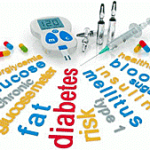Maybe you know someone in your family, a friend, or a co-worker that has diabetes. Diabetes affects not only the person but the entire family. This article will discuss the types of diabetes and symptoms. Education concerning diabetes begins at home. Once we are educated, we can teach our family and the younger generation.
Type 1 diabetes is usually diagnosed in children and young adults and was previously known as juvenile diabetes. Only 5% of people with diabetes have this form of the disease. In type 1 diabetes, the body does not produce insulin. The body breaks down the sugars and starches you eat into a simple sugar called glucose, which it uses for energy. Insulin is a hormone that the body needs to get glucose from the bloodstream into the cells of the body.
Type 2 diabetes is the most common form of diabetes. If you have type 2 diabetes, your body does not use insulin properly. This is called insulin resistance. At first, your pancreas makes extra insulin to make up for it. But, over time, it isn’t able to keep up and can’t make enough insulin to keep your blood glucose at normal levels.
Gestational Diabetes – During pregnancy, usually around the 24th week, many women develop gestational diabetes. A diagnosis of gestational diabetes doesn’t mean that you had diabetes before you conceived or that you will have diabetes after giving birth. However, women who’ve had gestational diabetes have a 35 to 60 percent chance of developing type 2 diabetes in the next 10 to 20 years after giving birth.
Some common symptoms of diabetes include urinating often; feeling very thirsty; feeling very hungry – even though you are eating; extreme fatigue; blurry vision; cuts/bruises that are slow to heal; weight loss – even though you are eating more (type 1); tingling; pain; or numbness in the hands/feet (type 2).
Food selection is a key element of living with diabetes. It is easy to find diabetes cookbooks and recipes online to assist in adjusting your diet. It is easy to find a list of starchy vegetables to avoid as well as other foods that should be eliminated from one’s diet.
Exercise also is a very important factor when living with diabetes. A good exercise program along with a proper diet will help decrease your risk of diabetes.
Source: American Diabetes Association
- Diabetes - November 16, 2016
- September is Food Safety Month - August 28, 2016
- It’s Picnic Time - July 17, 2016

